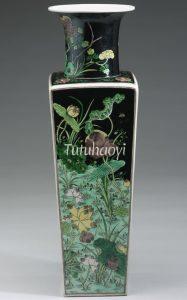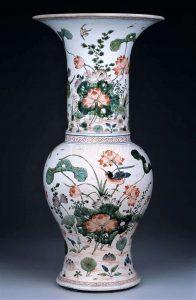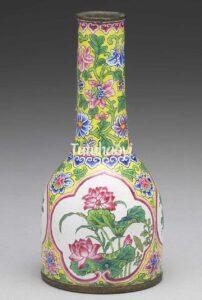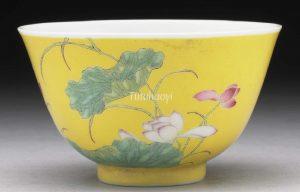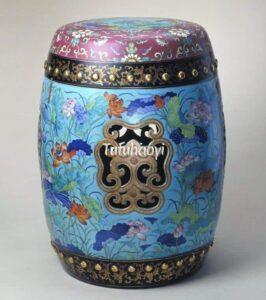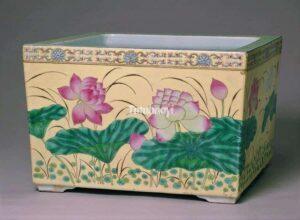Lotus (He Hua)
荷花
© Tutuhaoyi.com owns the copyright of the description content for the images attached. Quoting all or part of the description content on this page is permitted ONLY IF ‘Tutuhaoyi.com’ is clearly acknowledged anywhere your quote is produced unless stated otherwise. (本页描述内容版权归Tutuhaoyi.com所有,转发或引用需注明 “Tutuhaoyi.com”, 侵权必究, 已注开源信息的条目除外。)
Lotus flower is one of the most commonly seen motifs in Chinese traditional artworks. It is particularly favoured by scholars because one of its biological characteristics is that it grows out of mud yet blooms pure and untainted flowers, which scholars refer to their own uncorrupted nature.
Lotus in Chinese can be translated into He Hua (荷花) or Lian Hua (莲花). The use of their images, however, are interchangeable.
Lotus flower, leave, stem and pod may all have different meanings. See examples below:
Lotus bouquet 一把莲
May you pass examinations all the way 一路连科
You are an honest and uncorrupted official in your entire career 一路清廉
Fig 1: baluster vase with underglaze blue decoration, Shunzhi period (1644–61), Qing dynasty, courtesy of the Butler Family Collection
Fig 2: square porcelain vase with overglaze enamelled decoration, Kangxi period (1662–1722), Qing dynasty, courtesy of the National Palace Museum, Taipei
Fig 3: beaker vase with overglaze enamelled decoration, Kangxi period (1662–1722), Qing dynasty, courtesy of the Museum of Fine Arts, Boston
Fig 4: porcelain bowl with overglaze enamelled decoration, Kangxi period–early 18th century, courtesy of the Museum of Fine Arts, Boston
Fig 5: copper bottle with falangcai enamelled decoration, Yongzheng period (1723–35), Qing dynasty, courtesy of the National Palace Museum, Taipei
Fig 6: porcelain cup with falangcai enamelled decoration, Yongzheng period (1723–35), Qing dynasty, courtesy of the National Palace Museum, Taipei
Fig 7: porcelain bowl, Qianlong period (1736–95), Qing dynasty, courtesy of the National Palace Museum, Taipei
Fig 8: porcelain vase with underglaze blue decoration, Qianlong period (1736–95), Qing dynasty, courtesy of Palace Museum, Beijing
Fig 9: glass snuff-bottle with falangcai enamelled decoration, Qianlong period (1736–95), Qing dynasty, courtesy of the National Palace Museum, Taipei
Fig 10: copper container with falangcai enamelled decoration, Qianlong period (1736–95), Qing dynasty, courtesy of the National Palace Museum, Taipei
Fig 11: porcelain bowl with falangcai enamelled decoration, Qianlong period (1736–95), Qing dynasty, courtesy of the National Palace Museum, Taipei
Fig 12: drum stool with underglaze blue and overglaze enamelled decoration, Qianlong period (1736–95), Qing dynasty, courtesy of Palace Museum, Beijing
Fig 13: square flower pot with overglaze enamelled decoration, Guangxu period (1875–1908), Qing dynasty, courtesy of Palace Museum, Beijing

